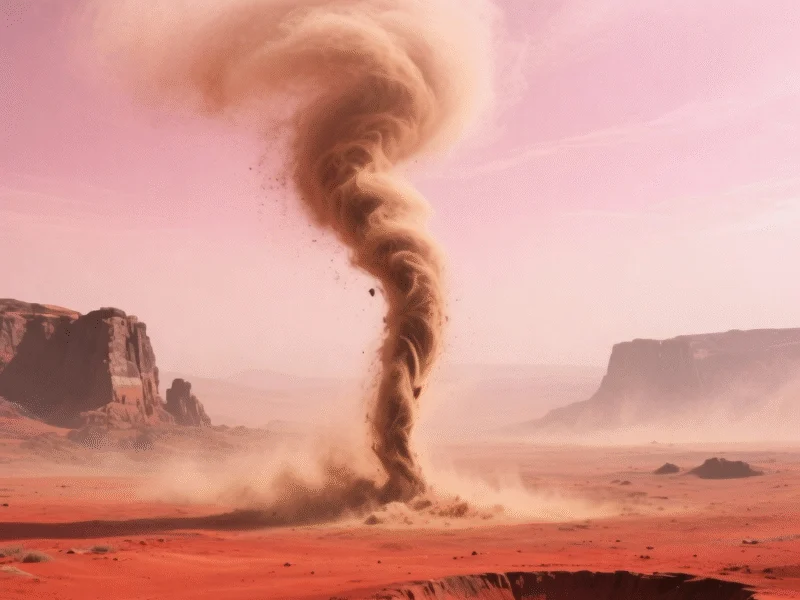TITLE: Mars Wind Speeds Hit 99 MPH in 20-Year Dust Devil Study
Mars Weather Data Reveals Planet Is Windier Than Expected
Nearly five decades after NASA’s Viking orbiters first captured images of mysterious dust columns swirling across the Martian surface, new research confirms these shadowy figures were dust devils—one of Mars’ most intriguing weather phenomena. A comprehensive study analyzing two decades of orbital data reveals that Martian winds reach significantly higher speeds than scientists previously estimated.
Unprecedented Wind Speed Measurements
Published in Science Advances, the groundbreaking research combines imagery from the European Space Agency’s Mars Express and ExoMars Trace Gas Orbiter spacecraft. Scientists meticulously analyzed 1,039 dust devils across various Martian regions, discovering wind velocities reaching astonishing speeds of 99 miles per hour (160 kilometers per hour).
Valentin Bickel, lead researcher from the University of Bern in Switzerland, explained the significance: “Dust devils make the normally invisible wind visible. By measuring their speed and direction of travel we have started mapping the wind all over Mars’s surface. This was impossible before because we didn’t have enough data to make this kind of measurement on a global scale.”
The Science Behind Martian Dust Devils
These atmospheric phenomena form when Mars’ surface heats up, pushing warm air near the ground rapidly upward through cooler air above. As the heated air rises, it creates a low-pressure zone that surrounding cooler air rushes to fill, generating rapidly rotating wind columns that lift dust from the surface.
The research provides crucial insights into how dust enters and circulates within Mars’ atmosphere, offering scientists better understanding of the planet’s climate dynamics and atmospheric composition.
Global Mapping and Seasonal Patterns
The research team created detailed maps showing the locations of all recorded dust devils and the movement directions for 373 specific events. While dust devils occur across Mars, the study identified several hotspots where they form with greater frequency.
The analysis revealed several key patterns:
- Seasonal timing: Dust devils occur most frequently during Mars’ spring and summer
- Daily formation: They typically develop between 11 a.m. and 2 p.m. solar time
- Wind correlation: Areas with faster winds show increased dust lifting into the atmosphere
Practical Applications for Future Missions
The findings have immediate practical applications for current and future Mars exploration. “Now that we know where dust devils usually happen, we can direct more images to those exact places and times,” Bickel noted. “We are also coordinating missions to image the same dust devils simultaneously, enabling us to compare movement measurements and validate our data.”
The wind data proves particularly valuable for planning future human and robotic missions to the Red Planet. “Information on wind speeds and directions is really important when planning the arrival of future landers and rovers at Mars,” Bickel emphasized. “Our measurements could help scientists understand wind conditions at landing sites before touchdown, helping them estimate how much dust might settle on rover solar panels—and therefore how often they should self-clean.”
This comprehensive analysis builds upon earlier findings about Martian weather patterns, providing the most detailed picture yet of wind behavior across the planet’s surface. The extended dataset offers scientists unprecedented ability to predict and understand Martian atmospheric conditions.



